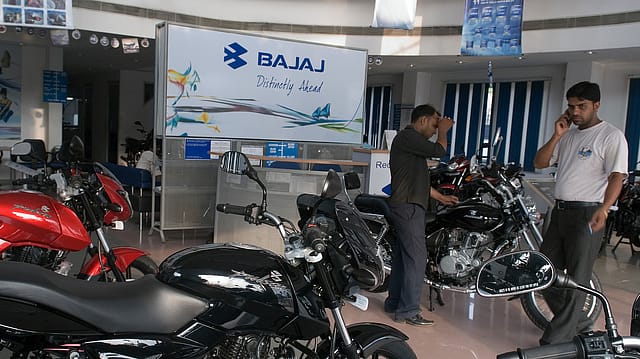Rural auto sales outshine urban markets in FY25
ADVERTISEMENT

India's automobile industry witnessed a strong performance in rural areas while urban markets remained under stress in the financial year 2024-25, according to the Federation of Automobile Dealers Associations of India (FADA).
Sales of two-wheelers in rural markets grew by 8.39%, comfortably outpacing the urban growth of 6.77%, while passenger vehicles posted 7.93% growth in rural sales, compared to 3.07% in cities, said FADA President C S Vigneshwar.
Three-wheelers saw an even bigger contrast at 8.70% in rural regions versus just 0.28% in urban, said Vigneshwar.
“Our initial forecast of low single-digit growth—around 5%—for passenger Vehicles ended up hitting the mark almost perfectly at 4.87%. While we hoped for double digits in two-wheelers, we ended up at 7.71%. Commercial Vehicles, on the other hand, came in nearly flat at -0.17%, reminding us just how much factors like unpredictable weather, financing constraints, and shifting consumer sentiment can shape overall demand,” said Vigneshwar.
The first three weeks of March 2025 were notably weak but sales accelerated significantly in the last week, driven by positive triggers such as Navratri, Gudi Padwa, Eid, and year-end purchasing influenced by depreciation benefits, said the FADA president.
Overall, retail sales saw a year-on-year decline of 0.7%. Among the segments, 2W, 3W, and tractor registered year-on-year declines of 1.7%, 5.6%, and 5.7% respectively, while passenger vehicles and commercial vehicles grew by 6% and 2.6%.
January 2026
Netflix, which has been in India for a decade, has successfully struck a balance between high-class premium content and pricing that attracts a range of customers. Find out how the U.S. streaming giant evolved in India, plus an exclusive interview with CEO Ted Sarandos. Also read about the Best Investments for 2026, and how rising growth and easing inflation will come in handy for finance minister Nirmala Sitharaman as she prepares Budget 2026.
“Dealers across segments did, however, raise concerns about exceptionally high targets, which were often set without joint agreement. It is crucial for OEMs and Dealers to work hand in hand, setting mutually attainable targets that reflect on-ground realities. Impractically high objectives risk creating confusion and financial strain within the retail network, ultimately hindering efforts to achieve sustainable growth and customer satisfaction,” said FADA.
In the two-wheeler segment, dealers reported a 1.7% dip in March. “While festive demand (Navratri, Gudi Padwa, Eid) and attractive discounts spurred some MoM momentum, subdued market sentiment persisted, influenced by upcoming OBD2-related price hikes, weak rural liquidity, and cautious financing. Additionally, stiff targets, heightened competition (including EVs), and a generally slow economy contributed to the YoY contraction. Issues such as low footfalls, network over-expansion, and rising operating costs remained,” the auto dealers’ body said.
In PV, the segment benefited from discounting, forthcoming price hikes, and festive buying, contributing to a 6% increase. “New model launches and better variant availability also aided growth. Nonetheless, many dealers highlighted unrealistic targets, liquidity challenges, and regional pockets of low demand, resulting in PV inventories rising to about 50-55 days. Incentives and festival-driven gains did push overall results higher, but dealers remain cautious about high stock levels and target pressures as the new financial year begins,” it said.
Commercial vehicle dealerships reported moderate 2.68% YoY growth. “Gudi Padwa deliveries, supportive financing, and infrastructure activity elevated customer footfall. However, major hurdles included aggressive targets and uneven product availability. Despite these challenges, the month closed on a positive note, buoyed by festive demand and the school-bus season,” said FADA.
